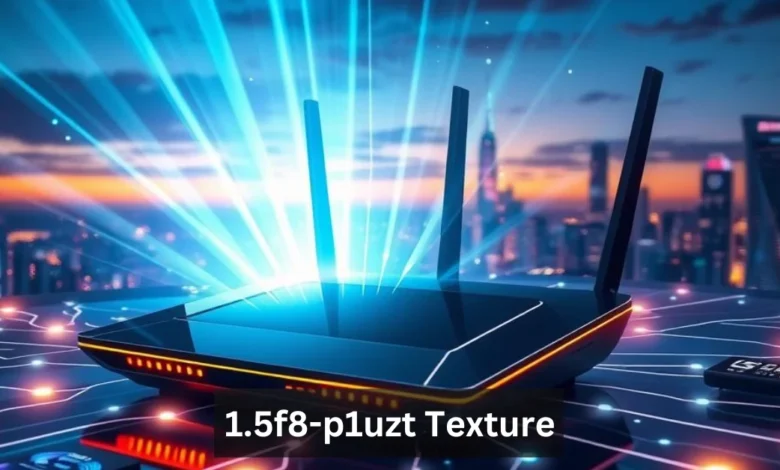1.5f8-p1uzt Texture Explained: What It Is and Why It Matters

Introduction
1.5f8-p1uzt Texture In the world of digital design, textures are an essential component of creating immersive environments and realistic visual elements. Whether you’re working on 3D models for gaming, VR environments, or digital art, textures help to bring surfaces to life. Among the vast array of textures available, the 1.5f8-p1uzt texture has gained attention for its distinctive characteristics and widespread use across various creative and industrial fields. In this guide, we will explore what the 1.5f8-p1uzt texture is, how it can be applied, and why it’s such an invaluable asset in modern design and development.
Understanding the 1.5f8-p1uzt texture is crucial for designers, artists, and developers who aim to create cutting-edge visuals with a high level of detail. By the end of this article, you will have a thorough understanding of this texture’s attributes, applications, and how to integrate it into your projects effectively.
What Is the 1.5f8-p1uzt Texture?
The 1.5f8-p1uzt texture is a specialized digital surface pattern often used in the context of 3D design, gaming, and interactive environments. This unique texture is defined by its granular, often pixelated appearance, making it stand out in a crowd of other surface patterns. Its name, “1.5f8-p1uzt,” is a code that reflects its specific characteristics, including the file format, resolution, and intended use.
One of the key features of the 1.5f8-p1uzt texture is its ability to seamlessly blend into various environments. It is versatile and can adapt to a wide range of surfaces, from gritty, industrial settings to more polished and high-tech designs. This makes it particularly popular in the design of realistic gaming environments and simulation platforms, where the fidelity of textures plays a significant role in creating immersive experiences.
Unlike traditional textures that might exhibit visible seams or mismatched tiles when applied at scale, the 1.5f8-p1uzt texture excels in its ability to be scaled up or down without losing integrity. This makes it highly suitable for large-scale environments, such as open-world games or virtual reality settings, where high-quality textures are essential for maintaining realism.
Applications and Use Cases of 1.5f8-p1uzt Texture
The 1.5f8-p1uzt texture is not just a useful tool in gaming; its applications extend across various industries. In 3D modeling, especially in game design and architectural visualization, textures like 1.5f8-p1uzt help create surfaces that look organic and detailed. Whether you’re designing a medieval castle, a futuristic cityscape, or a textured terrain, this particular texture can add a level of depth and realism that elevates the entire scene.
In the world of game development, textures are the building blocks for environments. The 1.5f8-p1uzt texture, in particular, has found a niche in areas where detailed, realistic surfaces are essential. For example, in first-person shooter (FPS) games, where players closely inspect their surroundings, textures like 1.5f8-p1uzt ensure that walls, floors, and objects reflect light, shadows, and other elements in a lifelike way.
Beyond gaming, the texture is also employed in architectural rendering and CAD software for interior and exterior designs. Designers use it to simulate real-world materials, like concrete, brick, or metal, to make their visualizations more convincing. The 1.5f8-p1uzt texture’s high level of detail helps bring 3D models to life, allowing architects and clients to see how their designs would appear in the real world.
The VR and AR industries also benefit from this texture. In virtual reality, every object within a simulation needs to feel tactile and real. A texture like 1.5f8-p1uzt plays a crucial role in creating that tactile feel, enhancing the sense of presence in immersive experiences. It helps virtual objects look more convincing and less flat, ensuring users have a seamless and engaging experience.
How to Work With 1.5f8-p1uzt Texture
Working with the 1.5f8-p1uzt texture requires understanding how to apply it correctly to get the best results. Fortunately, modern tools and software make this process relatively straightforward, as long as you follow a few key guidelines. The most common platforms where you will encounter and use this texture are Blender, Unreal Engine, and Unity—each of which has robust support for 3D textures.
Tools and Software
Before starting, ensure that your chosen software supports the 1.5f8-p1uzt texture format. Blender, a popular 3D modeling and animation software, is commonly used for creating models that incorporate high-quality textures like 1.5f8-p1uzt. In Unreal Engine and Unity, the texture can be easily imported into materials and applied to models using the engine’s texturing tools. Each platform allows for easy manipulation of texture properties, such as scaling and tiling, to fit the needs of your scene.
Tips for Integration
When integrating 1.5f8-p1uzt into a 3D scene, start by adjusting the texture’s scale to match the surface it is applied to. Avoid excessively large or small textures that may disrupt the scene’s realism. Additionally, ensure that the texture is properly mapped to your model. This step often involves UV mapping, which helps the texture fit smoothly on the surface without distortion.
Customization and Optimization
To optimize the texture, consider tweaking its color balance, brightness, and contrast to fit the mood of your environment. For example, a more industrial scene might benefit from darker, more muted tones, while a high-tech environment might require sharper contrasts. Additionally, optimizing the texture’s resolution ensures it maintains performance while avoiding unnecessary load times or lag, especially for interactive applications.
Troubleshooting Common Issues
Sometimes, textures like 1.5f8-p1uzt can appear distorted when applied to irregular or complex surfaces. This issue can typically be fixed by adjusting the model’s UV mapping or by ensuring that the texture’s resolution is compatible with the model’s size. If the texture appears blurry, consider reducing the tiling amount or increasing the texture’s resolution to restore clarity.
Where to Find and Download 1.5f8-p1uzt Textures
Finding high-quality 1.5f8-p1uzt textures requires knowing where to look. There are several trusted online platforms that provide both free and premium textures for designers and developers. Websites like Textures.com, Polyhaven, and TurboSquid offer extensive libraries where you can find textures, including the 1.5f8-p1uzt variety.
When choosing where to download the texture, consider the licensing terms. Some textures come with restrictions, such as only being allowed for personal use or requiring attribution. If you’re working on commercial projects, make sure the textures you download have the appropriate license for your needs.
Also, always check for compatibility with your software. Not all textures are created in formats that are universally compatible across different 3D programs. Fortunately, the 1.5f8-p1uzt texture is widely supported, but it’s important to confirm this before downloading to avoid unnecessary issues during integration.
Conclusion
The 1.5f8-p1uzt texture is a versatile and essential resource for digital designers, game developers, and VR artists. Its ability to maintain high levels of detail while being adaptable to a variety of environments makes it an excellent choice for projects that demand realism and depth. Whether you’re working on a game, an architectural visualization, or a virtual reality environment, the 1.5f8-p1uzt texture will elevate the quality of your work.
By understanding its applications, learning how to integrate it effectively, and finding reliable sources for downloading, you can incorporate this texture into your projects to enhance their overall impact. As technology evolves, so too will the role of textures like 1.5f8-p1uzt in creating immersive, high-quality digital experiences.
Also Read: 99math



